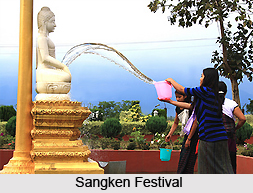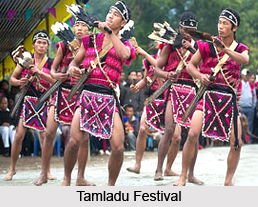 Fairs and festivals of Lohit district are accompanied not only by religious beliefs but also by a bunch of frolics for the people of the district. Mostly the festivals mark the beginning of New Year and people observe these festivals to give a joyous start to the New Year. Worship of different deities along with prayers also form a significant part of these fairs and festivals. These also help in promoting togetherness among the people through merriment and different celebrations. Local dances also form an important aspect of these fairs and festivals. They also help in contributing to the rich cultural heritage of the country.
Fairs and festivals of Lohit district are accompanied not only by religious beliefs but also by a bunch of frolics for the people of the district. Mostly the festivals mark the beginning of New Year and people observe these festivals to give a joyous start to the New Year. Worship of different deities along with prayers also form a significant part of these fairs and festivals. These also help in promoting togetherness among the people through merriment and different celebrations. Local dances also form an important aspect of these fairs and festivals. They also help in contributing to the rich cultural heritage of the country.
Sangken
Sangken is one of the main festivals of Lohit district. It is mainly celebrated by the Khamtis who are the dwellers of the plains of the district. On this occasion, the idols of Lord Buddha are ceremoniously bathed. It is observed every year in the month of April and marks the beginning of New Year.
This three day festival is accompanied by the preparations of delicious sweets at home and their distribution among friends and relatives. During the festival, statues of Lord Buddha are placed at different places and clean water is poured over them along with chanting of prayers. The added attraction of the festival is formed by pouring and splashing of the same water on each other which is symbolic of the togetherness. The idols are taken back to the place of worship on the last day of the festival. This is accompanied by the drum beatings and funfare. Finally, in the Buddha temple, a prayer is conducted where people wish to begin the New Year with joy and prosperity.
The idols are taken back to the place of worship on the last day of the festival. This is accompanied by the drum beatings and funfare. Finally, in the Buddha temple, a prayer is conducted where people wish to begin the New Year with joy and prosperity.
Tamladu
Tamladu is another important festival of Lohit district. It is celebrated by the Digaru Mishmis. It is observed in the honour of the God of Water and the God of Earth so that they protect the district folks from natural calamities. In this festival, the worship of the supreme God Jebmalu is also performed for the prosperity of people, crops and domestic animals. During Tamladu, the New Year is welcomed with the performances of vibrant dances. The priests of the village consider the Sun God as the creator.



















